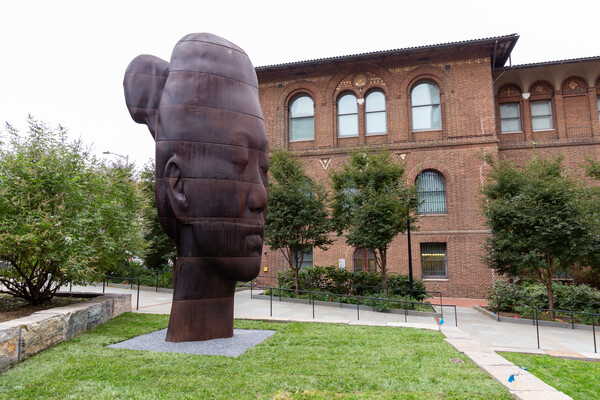
(From left) Doctoral student Hannah Yamagata, research assistant professor Kushol Gupta, and postdoctoral fellow Marshall Padilla holding 3D-printed models of nanoparticles.
(Image: Bella Ciervo)
This fall, Jessica Varner, a historian of the built environment, joined the Weitzman School of Design faculty as an assistant professor of landscape architecture. In her research, Varner explores the intersections between architectural, environmental, and chemical history, including the use of chemicals in building and construction materials. At Penn, she teaches courses on landscape history and landscape writing.
Varner’s research uncovers the links between the development of the chemical industry and its connection to architectural materials and architectural history. “When I came into my Ph.D., I started with a question of U.S. regulatory frameworks in the 1970s from the environmental movement, early conceptions of the EPA, and product consumer laws. As I started down that road, I realized the history was quite a bit deeper. Those regulatory frameworks, the pre-history was really in the emergence of the corporation in the 1860s.”
“Often folks think of pharmaceuticals or food or pesticides as the entry point for chemicals development. But really, the deep connection to the built environment—to construction products, to paints, grouts, and glues—emerged at a different register. And I believe it is understudied because of the very different regulatory framework that construction products follow.”
Varner describes the implications of her research for contemporary designers and scholars. “My questions come precisely from a background in environmental advocacy and coalition-building around anti-toxics. I think this moment in particular, because of the climate crisis, and because climate change is well understood, people are asking deeper questions about, structurally, how we got here.”
Varner teaches a course in the fall called Landscape Histories, and Landscape Writings in the spring. “It’s a full-year arc course that allows students to deeply understand landscape histories, how they can begin to write about them, and how they can improve their foundational skills in research and writing. Really it comes from a deeper understanding and a background in the history of science, in environmental history and the design world. Getting the students these tools for the deep research that they will be using in the future in the humanities and asking critical questions about landscapes globally.”
“Part of my goal, always, as a place-based historian is to have the students understand what deep primary source research looks like in the places where they live.”
This story is by Jared Brey. Read more at Weitzman News.
From the Weitzman School of Design

(From left) Doctoral student Hannah Yamagata, research assistant professor Kushol Gupta, and postdoctoral fellow Marshall Padilla holding 3D-printed models of nanoparticles.
(Image: Bella Ciervo)

Jin Liu, Penn’s newest economics faculty member, specializes in international trade.
nocred

nocred

nocred